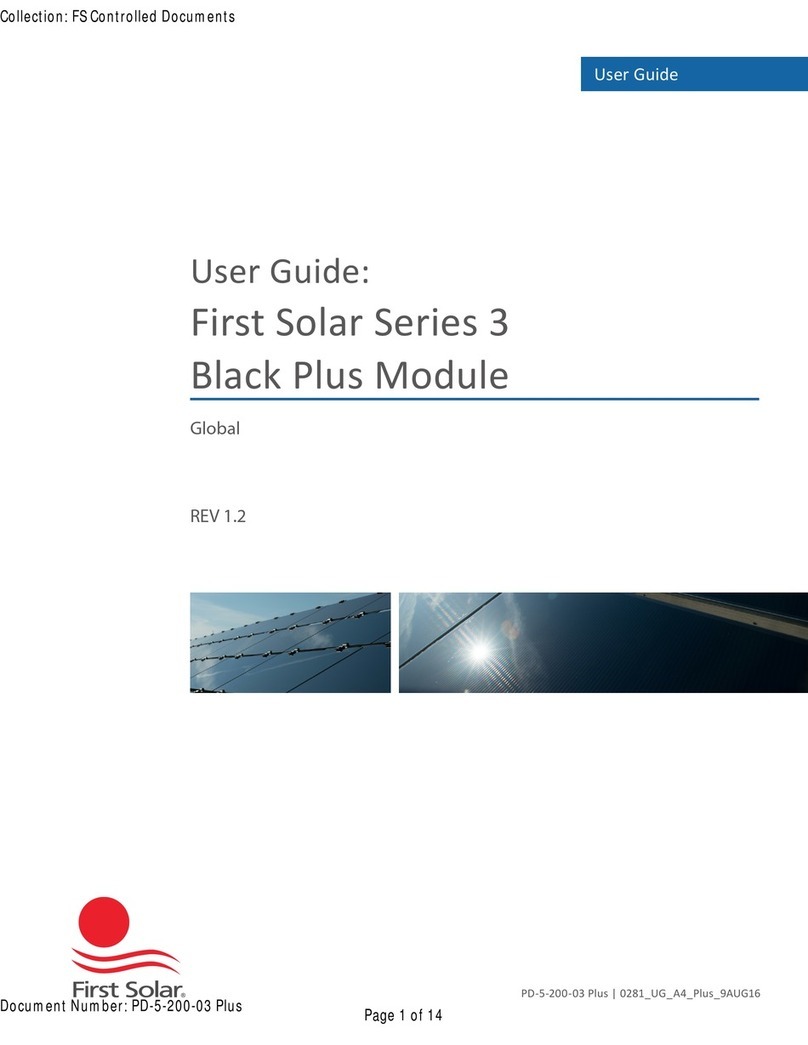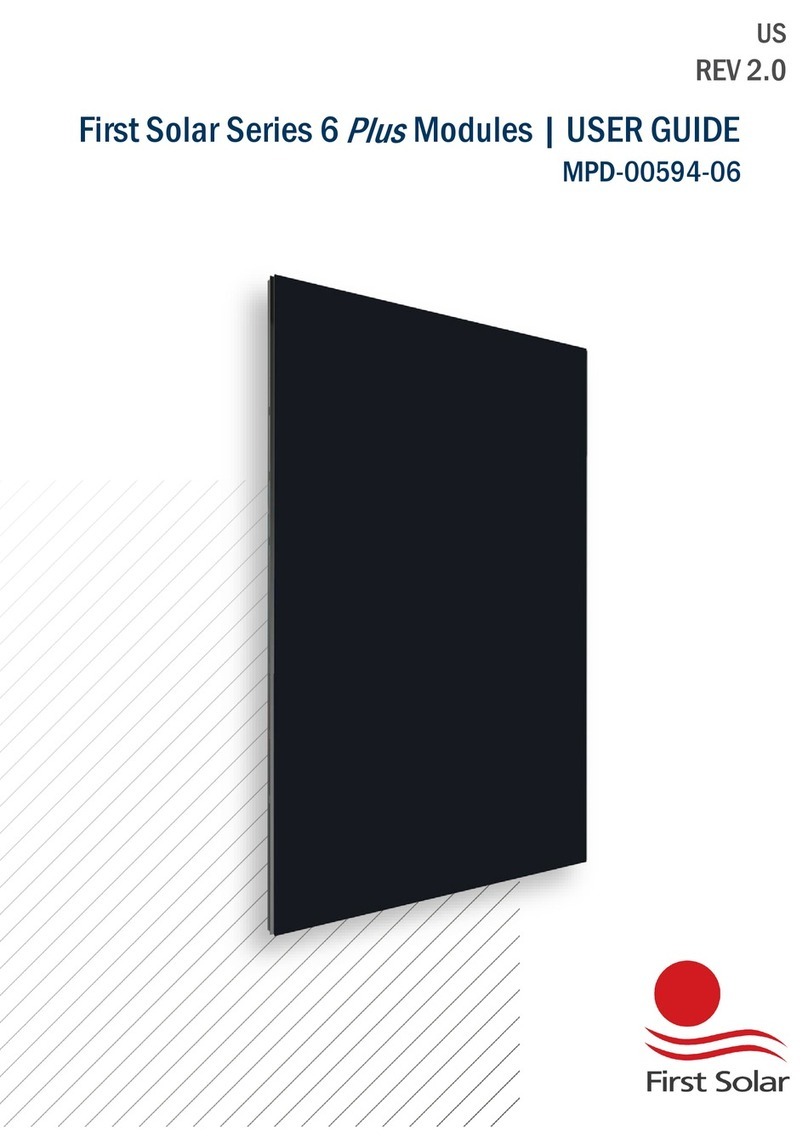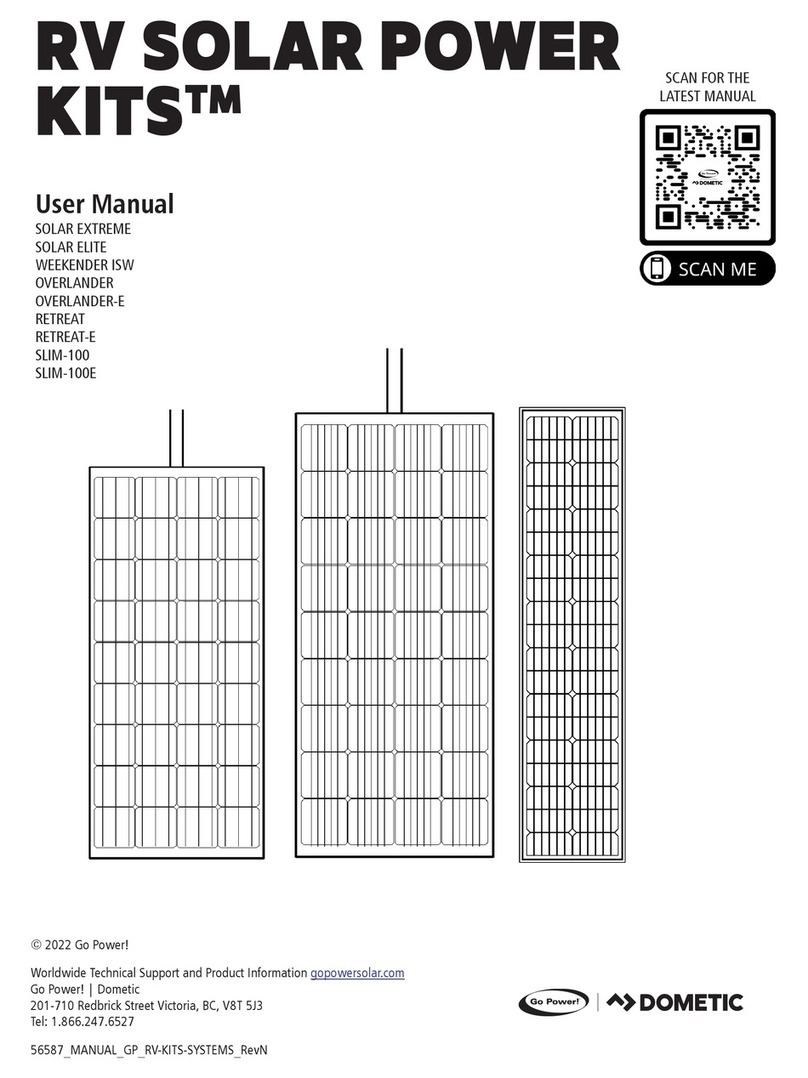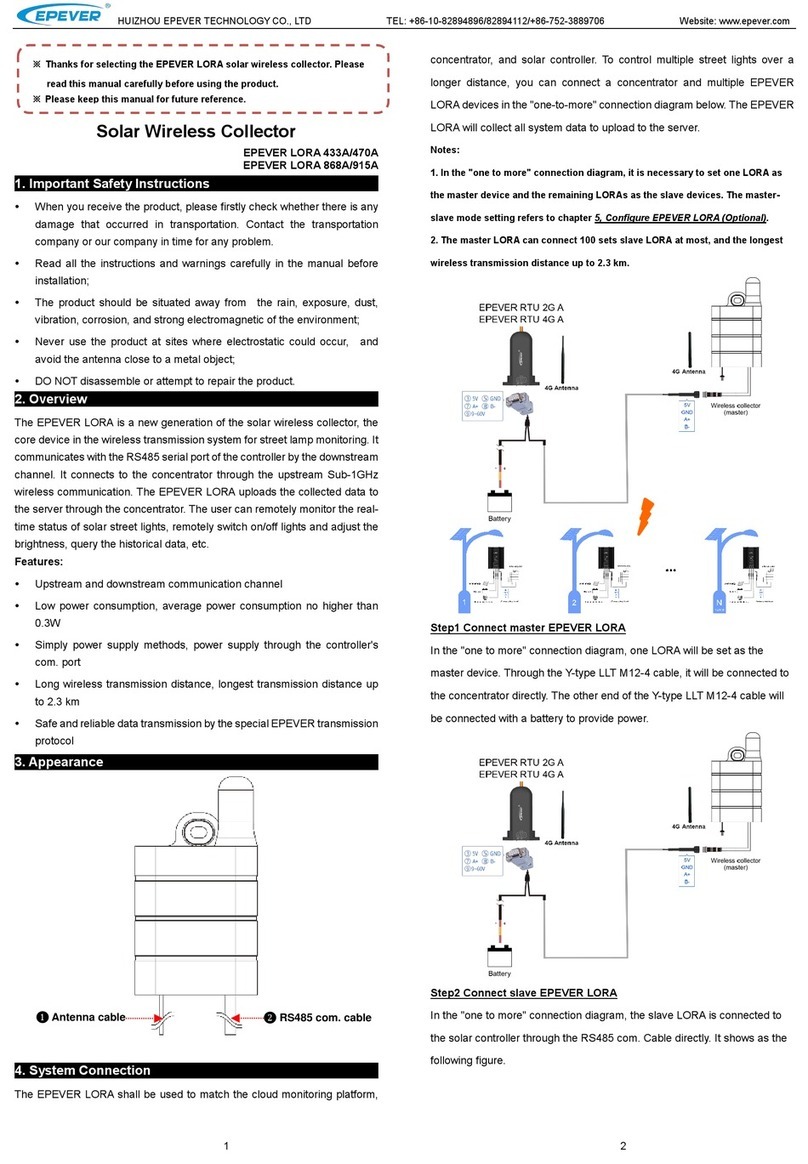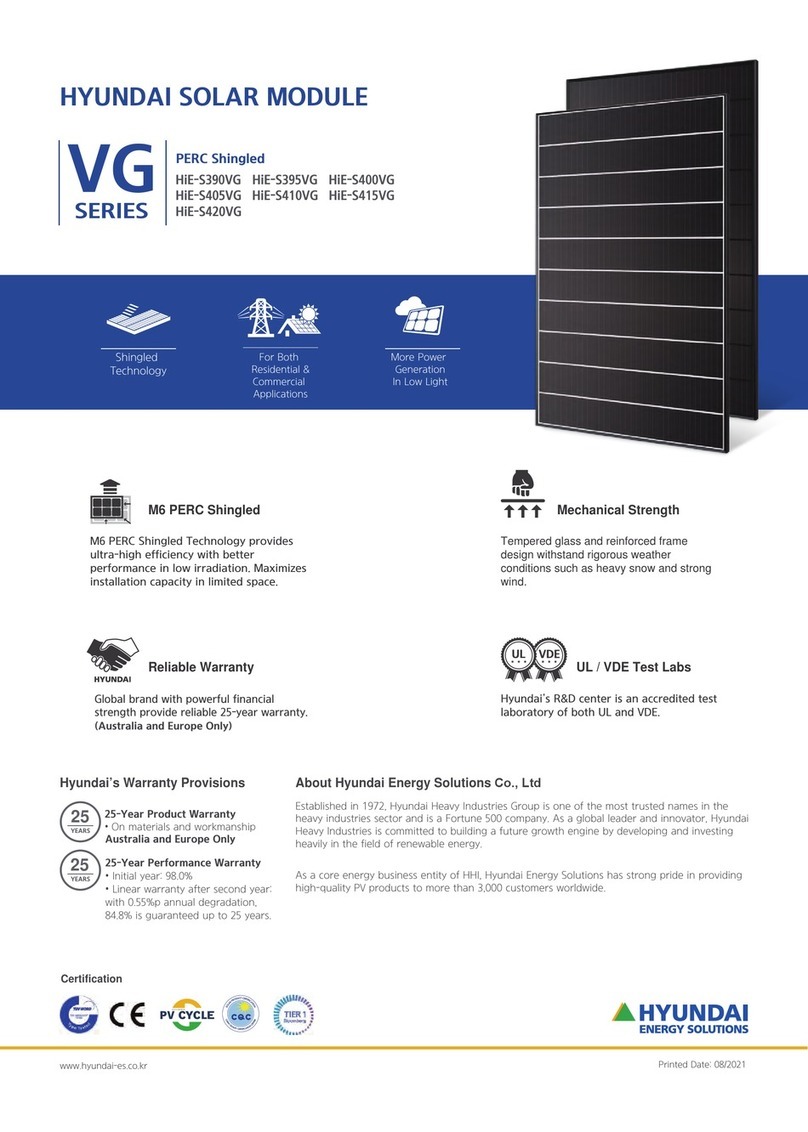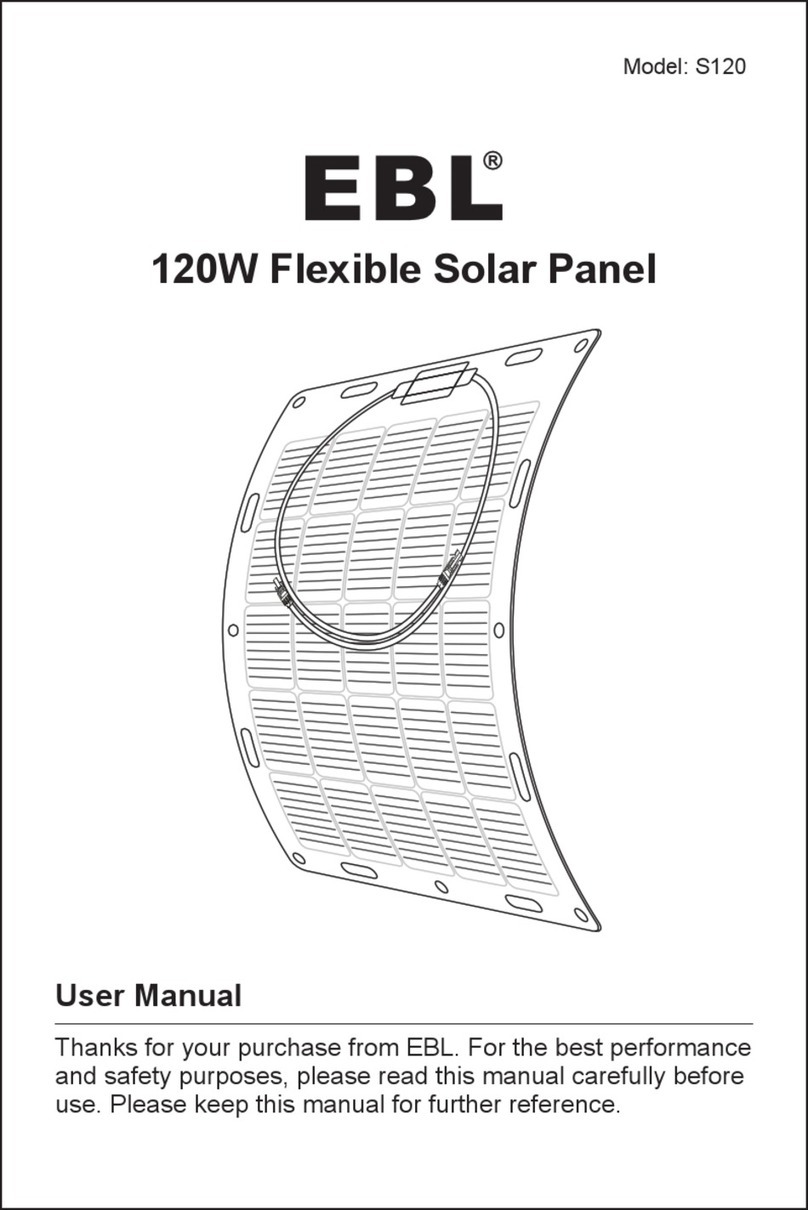First Solar 7 Series User manual

First Solar Series 7 FT1 Module - USER GUIDE
MPD-00810-07-IN
REV 1.0

FIRST SOLAR First Solar Series 7 FT1 Module - USER GUIDE i of 22
FIRST SOLAR, INC. | MPD-00810-07-IN REV 1.0
First Solar and the First Solar logo are trademarks of First Solar, Inc., registered in the U.S. and other
countries. Series 7 and Series 7 FT1 are trademarks of First Solar, Inc.
NOTICE
First Solar reserves the right to make changes in solar module design and/or specifications at any time
without notice. Accordingly, the reader is cautioned to verify that data sheets are current before placing
orders or finalizing system permitting and/or design. Information furnished by First Solar is believed to be
accurate and reliable. However, no responsibility is assumed by First Solar or its subsidiaries for its use; nor
for any infringements of patents or other rights of third parties, which may result from its use. No license is
granted by implication or otherwise under any patent or patent rights of First Solar or its subsidiaries.
CONTACT INFORMATION
For information regarding First Solar and its products, please visit www.firstsolar.com. First Solar has an
extensive library of supporting Application Notes that can be made available upon request from technical
support [email protected].
GLOBAL
First Solar, Inc.
P.O. Box 730
Toledo, OH USA 43697-0730
Tel: +1 (602) 414-9300
Fax: +1 (602) 414-9400

FIRST SOLAR First Solar Series 7 FT1 Module - USER GUIDE ii of 22
FIRST SOLAR, INC. | MPD-00810-07-IN REV 1.0
TABLE OF CONTENTS
1INTRODUCTION 1
2SAFETY 2
3REGULATORY COMPLIANCE 4
4PRODUCT IDENTIFICATION & RATINGS 5
4.1 PRODUCT IDENTIFICATION & RATINGS 5
4.2 SYSTEM DERATING FACTORS 6
5HANDLING & STORAGE 7
5.1 HANDLING & STORAGE 7
6MECHANICAL SPECIFICATIONS 8
7INSTALLATION & MOUNTING 9
7.1 MOUNTING 9
7.2 MOUNTING LOCATIONS & LOAD RATINGS 9
7.3 BACKRAIL MOUNTING 11
7.4 MODULE ORIENTATION 12
7.5 MODULE SHADING CONSIDERATIONS 13
7.6 WIRE MANAGEMENT 14
7.7 ELECTRICAL INTERCONNECTION 15
7.8 INVERTER COMPATIBILITY 16
7.9 GROUNDING METHOD 17
8MAINTENANCE 18
8.1 MAINTENANCE 18
8.2 MODULE CLEANING GUIDANCE 19
8.3 MODULE DISPOSAL 21
9REVISION HISTORY 22

FIRST SOLAR First Solar Series 7 FT1 Module - USER GUIDE 1 of 22
1INTRODUCTION
This document provides information on First Solar Series 7 FT1 modules of model types FS-7XXXA-FT1
(“XXX” references the module power rating) for system designers, installers, and maintenance personnel.
Modules are designed to have a long operating life and high energy yield when installed, operated, and
serviced in accordance with the instructions in this User Guide. Read this User Guide thoroughly before
beginning any work related to installation, operation, or maintenance.
Please refer to your First Solar Module Warranty Terms & Conditions for module warranty terms and product
return policies. Failure to follow this User Guide may void your warranty.
Keep this User Guide for future reference and provide to all subsequent owners or users of the
solar modules. Updates may be found at www.firstsolar.com.

FIRST SOLAR First Solar Series 7 FT1 Module - USER GUIDE 2 of 22
FIRST SOLAR, INC. | MPD-00810-07-IN REV 1.0
2SAFETY
All instructions and safety information should be read and understood before attempting to handle, install,
or electrically connect First Solar modules. Failure to follow safety, installation, and handling instructions
may result in injury. Only qualified personnel should install, operate, or maintain PV modules or systems.
Series 7 FT1 modules are designed for 1500 VDC systems at altitudes up to 3000 m (9842 ft) per IEC
61730. Series 7 FT1 modules are designed for 1000 V systems at altitudes up to 5000 m (16404 ft) per
IEC 61730.
Select installation locations and module support structures to ensure modules and connectors (open or
mated) are never submerged in standing water.
DANGER
Series 7 FT1 modules may produce up to 285 Volts DC (VDC) and up to 4.5 A when exposed to
sunlight. The danger increases as modules are connected together in series and/or parallel.
FT1
A single module or multiple interconnected modules can create a lethal shock hazard during
daylight hours, including periods of low light levels
.
DANGER
To avoid fire and/or injury
due to ground faults and associated electrical hazards:
►Do not unplug PV module connections while under load. Do not disconnect the module
connectors during daylight hours unless the module is in an open circuit condition.
►Replace modules with damaged wires immediately. Keep all array wiring out of reach of
non-qualified personnel.
►Do not concentrate light on the module in an attempt to increase power output.
►Never allow the PV array system voltage to exceed 1500 VDC under any condition.
►Replace broken modules immediately.
►Repair ground faults immediately.
►Do not work on modules or systems when the modules or wiring is wet.
►All building mounted PV systems should utilize Ground Fault Detector Interrupters (GFDI)
and ARC Fault Circuit Interrupters to minimize risk of electrical shocks and fires.
Series 7 FT1 modules have a maximum overcurrent protection rating of 5.0 A as defined by IEC 61730-1
and IEC 61730-2. PV systems should be designed to comply with and provide module overcurrent
protection consistent with local codes.

FIRST SOLAR First Solar Series 7 FT1 Module - USER GUIDE 3 of 22
FIRST SOLAR, INC. | MPD-00810-07-IN REV 1.0
The conditions necessary to trigger reverse current overload (RCOL) do not occur in typical operating modes
of a properly installed PV system. The system designer should ensure that modules are not subjected to
RCOL. The use of GFDI devices or other advanced fault monitoring techniques can significantly reduce the
likelihood of sustained ground faults. Properly selected and installed string fuses can increase protection
against RCOL.
DANGER
Reverse currents
higher than the rated values for a First Solar module, may result in module
failure, including module breakage due to RCOL. Extreme and continuous RCOL conditions may
cause a fire or create electrical shock hazards. To avoid RCOL:
►Maintain equivalent voltage in parallel strings by installing an equal number of modules
per string within the same source circuit. Failure to install modules with balanced voltage
in parallel strings can result in voltage imbalance.
►Incorporate measures to protect modules against RCOL for connections of parallel strings.
Modules damaged because of system-induced RCOL are not covered under the First Solar Module
Warranty. Module warranty eligibility is not affected by the presence, absence, or type of reverse current
protection used in a system design.
CAUTION
Wear safety glasses
and
cut-resistant gloves
when working with non-interconnected modules or
system components.
Wear electrically rated PPE
when working with interconnected modules or system components.
Select PPE based on work consistent with local and/or national standards.
WARNING
To avoid risk of fire, do NOT interconnect Series 7 FT1 modules with other FS Series modules
(e.g. – Series 6, Series 4, Series 3, or Series 2) within the same interconnected string, inverter,
or Maximum Power Point Tracker.

FIRST SOLAR First Solar Series 7 FT1 Module - USER GUIDE 4 of 22
FIRST SOLAR, INC. | MPD-00810-07-IN REV 1.0
3REGULATORY COMPLIANCE
It is the responsibility of the installer and/or system integrator to ensure compliance with all local structural
and electrical codes, which may be applicable to the installation and use of First Solar Series 7 FT1
modules.
Series 7FT1 modules are tested and certified per IEC 61730-1/IEC 61730-2 and meet Class II
requirements for 1500 VDC systems.
Series 7FT1 modules are tested and certified per IEC 61215-1/IEC 61215-1-2/IEC 61215-2 for a
maximum system voltage of 1500 VDC.

FIRST SOLAR First Solar Series 7 FT1 Module - USER GUIDE 5 of 22
FIRST SOLAR, INC. | MPD-00810-07-IN REV 1.0
4PRODUCT IDENTIFICATION & RATINGS
4.1 PRODUCT IDENTIFICATION & RATINGS
Each module is equipped with a product label on the back and laser-etched identification on the front glass.
The label identifies the model number, nameplate electrical ratings, and safety information, and it is
equipped with a Radio-Frequency Identification (RFID) tag.
The module Rated Power is denoted in the ‘XXX’ position of the base Model Number format of FS-7XXXA-
FT1. (Example: FS-7550A-FT1 has a Rated Power of 550W)
The ratings in Table 1 have a tolerance of ±10% unless otherwise noted.
Note: Electrical specifications are subject to change. See module label for final electrical ratings.
Table 1: Ratings at Standard Test Conditions (STC1)
RATED POWER2
(-0/+5%)
VOLTAGE AT
PMAX
CURRENT AT
PMAX
OPEN CIRCUIT
VOLTAGE
SHORT CIRCUIT
CURRENT
MAX SYSTEM
VOLTAGE
MAX SERIES
FUSE
P
MAX
(W)
V
MAX
(V)
IMAX(A)
VOC(V)
ISC(A)
V
SYS
(V)
ICF(A)
465.0 175.1 2.66 219.4 2.95
1500 5.0
470.0 176.0 2.67 220.0 2.96
475.0 177.0 2.68 220.5 2.97
480.0 177.9 2.70 221.1 2.98
485.0 178.8 2.71 221.7 2.98
490.0 179.7 2.73 222.3 2.99
495.0 180.7 2.74 222.8 3.00
500.0 181.6 2.75 223.4 3.01
505.0 182.5 2.77 223.9 3.01
510.0 183.4 2.78 224.5 3.02
515.0 184.3 2.80 225.0 3.03
520.0 185.2 2.81 225.6 3.04
525.0 186.0 2.82 226.1 3.04
530.0 186.9 2.84 226.7 3.05
535.0 187.8 2.85 227.2 3.06
540.0 188.7 2.86 227.7 3.06
1As received and stabilized ratings at STC (1000 W/m², AM1.5, (25 ± 2)°C Cell Temperature) ±10%
2Measurement uncertainty applies

FIRST SOLAR First Solar Series 7 FT1 Module - USER GUIDE 6 of 22
FIRST SOLAR, INC. | MPD-00810-07-IN REV 1.0
Table 2: Temperature Characteristics
TEMPERATURE CHARACTERISTICS
Module Operating Temperature Range (°C) -40 to +85
Temperature Coefficient of PMAX
T
k
(P
MAX
)
-0.32%/°C (Temperature Range: 25°C to 75°C)
Temperature Coefficient of VOC
T
k
(V
OC
)
-0.28%/°C
Temperature Coefficient of ISC
T
k
(I
SC
)
+0.04%/°C
4.2 SYSTEM DERATING FACTORS
Under normal operation, a PV module may experience conditions that produce higher current and/or
voltage than reported at STC. Accordingly, the values of Isc and Voc listed for STC should be multiplied by a
factor of 1.25 when determining component voltage ratings, conductor current ratings, and size of controls
connected to the PV output.
The safety factor of 1.25 for the minimum voltage rating of the components can be modified during the
design of a system according to the minimum temperature of the location of the installation and the
temperature coefficient for Voc. Isc can be adjusted based on maximal temperature, irradiance and
orientation of the module. To this end a full simulation for the specific location is required using long term
weather data.

FIRST SOLAR First Solar Series 7 FT1 Module - USER GUIDE 7 of 22
FIRST SOLAR, INC. | MPD-00810-07-IN REV 1.0
5HANDLING & STORAGE
5.1 HANDLING & STORAGE
When handling packs using forklifts or other mechanical aids, ensure uniform pack support, and the forks
fully extend under the pallet. Packs can be lifted from either the short or long side of the pallet. Packs must
not be stacked in the field or transported stacked. Packs must not be exposed in the field for longer than 6
weeks. Forklifts must engage the pallet a minimum of 1.5 m (60 in) for long side engagement and a
minimum of 1.65 m (65 in) for short side engagement. Failure to meet engagement lengths may damage
pallet and modules on bottom of pack. Make sure lifting equipment is up to spec based on the dimension
and weight of the pack.
Modules on a pack may lean or shift on a pallet during shipping. If any damage is observed, use the Delivery
Please evaluate site conditions for safe pack storage as uneven or recently disturbed ground and moisture
may affect pack stability. Packs are not intended for outdoor storage longer than 6 weeks. Packs should not
be exposed to standing water or saturated ground.
WARNING
Open the packaging with care. A single person should not attempt to lift a Series 7 FT1 module
.
Lift the modules from the pallet with two or more persons or with lift assist.
Do not attempt to lift
multiple modules at the same time.
During handling and installation, do not make abrasive contact with top glass surface to prevent
scratches of ARC film.

FIRST SOLAR First Solar Series 7 FT1 Module - USER GUIDE 8 of 22
FIRST SOLAR, INC. | MPD-00810-07-IN REV 1.0
6MECHANICAL SPECIFICATIONS
Table 3: Module Mechanical Specifications
SPECIFICATION
Series 7 FT1 (FS-7XXXA-FT1)
Module Weight 36.8 kg ± 3.5 kg (81.1 lbs ± 7.7 lbs)
Height 34.75 mm (1.37 in)
Length 2300 mm ± 2.5 mm (90.5 in ± 0.08 in)
Width 1216 mm ± 2.5 mm (49.0 in ± 0.08 in)
Total Area 2.80 m² (30.0 ft²)
Junction Box Lead Wire32.5 mm² (14 AWG)
500 mm (25.59 in) (+) & Bulkhead (-)
Figure 1: Series 7Module Mechanical Drawing
3Length from junction box exit to connector mating surface

FIRST SOLAR First Solar Series 7 FT1 Module - USER GUIDE 9 of 22
FIRST SOLAR, INC. | MPD-00810-07-IN REV 1.0
7INSTALLATION & MOUNTING
7.1 MOUNTING
It is best practice to complete heavy construction and trenching prior to module installation to minimize
module exposure to dust. Ensure any site preparation or maintenance chemicals (soil binding agents or
chemicals used for on-site dust control or weed control) do not spray, splash, or drift onto the surface of the
modules or its associated components.
It is the responsibility of the qualified engineer and/or qualified installer to ensure the system and its
components meet applicable structural and electrical code requirements for the product application’s
jurisdiction. For installation in corrosion areas in C4 (as defined by ISO9224) or greater, written approval
must be obtained from First Solar. First Solar is not responsible for bonding failure, breakage, damage,
wear, corrosion, or module performance issues that are deemed to be caused by design or installation
practices that do not comply with this User Guide.
CAUTION
Safety hazards or potentially unsafe practices:
►Do not install the modules during high wind or wet conditions.
►Handle modules with care during installation, as heavy impact to the front, back, or
edges could result in damage to the module. Do not impact module with hammer to
aid installation process.
►Do not walk, stand, or sit on modules.
►Do not carry multiple modules on top of one another after removal from pack.
►Do not lift or pull on modules using lead wire or junction boxes.
►Do not rest objects (such as tools, etc.) on module glass.
Modules must have adequate ventilation and airflow to prevent operating temperatures above 85°C.
7.2 MOUNTING LOCATIONS & LOAD RATINGS
The interface of the mounting structure to the module back rails must meet the technical requirements
specified in this User Guide. The mounting system design must provide adequate support for the module to
prevent load damage from occurring based on the loading requirements for the given application and the
chosen mounting locations. Structures must not come into direct contact with the surface or edges of the
module glass.
Modules can be fastened to the mounting structure with 20mm long bolt with M8X1.25 thread using the
symmetric under mount Rivet nuts on the module back rail.
Series 7 FT1 modules have been evaluated to operate in an ambient air temperature range of at least -40°C
to +40°C and have been tested to wind/snow loads as detailed in Table 4. Test loads include a safety factor
of 1.5 above the design loads.

FIRST SOLAR First Solar Series 7 FT1 Module - USER GUIDE 10 of 22
FIRST SOLAR, INC. | MPD-00810-07-IN REV 1.0
Series 7 FT1 modules meet the following load ratings when mounted as specified in this User Guide and
evaluated according to the listed standard in Table 4.
Table 4: Module Load Ratings
Symmetrical Four-point Mount Location
IEC 61215 / IEC 61730 / UL 61730
Design Load
Test Load
1300mm
± 1600 Pa
(± 33.4 lb/ft
2
)
± 2400 Pa
(± 50.1 lb/ft
2
)
Symmetrically secure the module using a minimum of four back rail contact points. Other mounting
solutions not discussed in this User Guide (Such as - asymmetric mounting, higher load ratings, alternative
clamp geometry, etc.) may be permitted, but require evaluation by First Solar
([email protected]). First Solar reserves the right to reasonable access to validate proper
installation.
►The modules shall have a minimum spacing gap of 15 mm (0.59 in) between each other.
►No corner contact between modules.
►Do not attempt to mount directly to module glass edge. Do not modify module back rails in any way.
This includes drilling additional holes, altering mounting features or otherwise cutting, trimming, or
shaping any part of the module back rails.
►Module attachment hardware (i.e. clips, bolts, etc.) must not contact the module glass.
►Mounting clamps certified/designed to electrically bond and/or ground the module back are allowed
when used in accordance with the clip manufacturer’s instructions.
►Install hardware may not put a compression load on the back rails.
Mounting hardware that do not meet the minimum requirements may not preserve module certifications or

FIRST SOLAR First Solar Series 7 FT1 Module - USER GUIDE 11 of 22
FIRST SOLAR, INC. | MPD-00810-07-IN REV 1.0
7.3 BACKRAIL MOUNTING
Series 7 FT1 module back rails include 4 mounting locations that feature M8 Rivet nuts embedded into the
module mounting rail. Utilizing a 20mm long bolt with M8X1.25 thread the module can be secured to the
mounting structure. Maximum torque applied should follow mounting structure supplier recommendations
and not exceed 24Nm. Back rail mounting features should be designed with adequate bearing surface
areas to prevent module damage under ultimate loads and consider any bending moments from
unbalanced loads.
Figure 4: Rivet Nut distance
Figure 2:
Rivet Nut hole
di i
Figure 3:
Rivet Nut mounting details

FIRST SOLAR First Solar Series 7 FT1 Module - USER GUIDE 12 of 22
FIRST SOLAR, INC. | MPD-00810-07-IN REV 1.0
7.4 MODULE ORIENTATION
PV performance modeling software, such as PlantPredict (http://www.plantpredict.com), should be used to
determine the optimum orientation and tilt angle for each location.
Mount modules in portrait orientation for applications where row-to-row shading could occur. Landscape
orientation is permitted only in flat mount applications where the module long edge is not completely
shaded and when compliant with Section 7.5 Module Shading Considerations.

FIRST SOLAR First Solar Series 7 FT1 Module - USER GUIDE 13 of 22
FIRST SOLAR, INC. | MPD-00810-07-IN REV 1.0
7.5 MODULE SHADING CONSIDERATIONS
Specific shading patterns can cause damage to module cells
due to the creation of localized areas of reverse bias. Reverse
bias is generated by one or more series-connected cells being
shaded while the rest of the cells are fully illuminated.
There is no risk of module damage due to shading that occurs
while modules are in open circuit. Shading that occurs at a
distance greater than 2 m (6.6 ft), also known as diffuse
shading, carries reduced risk and should be avoided where
possible. Row-to-row shading of modules installed in portrait
orientation is acceptable.
There is a low risk of module damage due to shading from
repeatedly walking or standing in front of operating modules or
from repeatedly parking or driving vehicles in front of operating modules during illuminated times. It is best
practice to stay close to the backside of the adjacent rack as one travels down a row of operating modules.
Do not subject modules to high risk shading instances listed below:
►Resting or adhering slender objects (tools, brooms, clothing, wires, tape) on front-side of operating
modules, or when within ~2 m (~6.6 ft) above operating modules, especially when the shadow is
oriented parallel to cells
►Fixed objects within ~2 m (~6.6 ft) above operating modules that cast a shadow over the long
dimension of the cells. Close objects (posts, ropes, fences, etc.) can begin to increase risk of partial
shading of full cells when within ~2 m (~6.6 ft) from the front-side of operating module
►A support to the back rails or mounting method of modules that fully shades the entire length of a
cell (either partially or completely)
►Cleaning robots or other mechanisms that traverse the module while the system is operating
►Row-to-row shading when the modules are installed in landscape orientation
►Closely “stair-stepped” trackers on northerly slopes (northern hemisphere), or southerly slopes
(southern hemisphere).
Figure 5: Example of at-risk shading
patterns

FIRST SOLAR First Solar Series 7 FT1 Module - USER GUIDE 14 of 22
FIRST SOLAR, INC. | MPD-00810-07-IN REV 1.0
7.6 WIRE MANAGEMENT
All wire management shall comply with the applicable IEC codes and standards for maintaining and
managing wires, as well as any applicable local requirements determined by local authorities having
jurisdiction. This document includes evaluation of general wire management requirements based on
interpretation of the following codes and standards and does not substitute for a comprehensive evaluation
of applicable requirements:
►IEC
o62548:2016, 7.3.7.3 – Erection Method
o62548:2016, 7.3.8 – Segregation of AC and DC Circuits
o60364-5-52:2009, 522.8.3 – Cable Bend Radius
Figure 6: Wire Management Hole Dimensions
Below is a list of best practices that applies to the majority of wire management scenarios:
►The connectors, X/T joints, and in-line fuses should not be in direct contact with the metal back rail
or structure. It is recommended that insulated cables do not come in direct contact with the metal
back rail or structure, unless unavoidable, to minimize stresses on components.
►The installation of harnesses, harness jumpers, harness whips, and PV array cables (or “Homerun”
cables) should not subject the connectors, X/T joints, and in-line fuses to tensile loads.
►Cable ties should be a minimum distance of 25 mm (1 in) from connectors, X/T joints, and in-line
fuses.
►Cables should not maintain constant contact with the edges of glass-to-glass solar module
laminates.
►Cable ties should be tensioned such that there is at least 13 mm (0.5 in) (two-finger-gap) between
the top of the cable bundle and the bottom of the back rail.
Typically, the lead wire connection does not require wire retention or securement due to the proximity of the
junction boxes on adjacent modules.
Above-ground DC cabling (typically a bundle of harness and homerun PV cables) may be supported by
utilizing the wire management holes located on the back rails. The maximum cable weight carried by each
module in totality may not exceed 3.5 kg (7.6 lbs). Do not use junction box for wire management
attachment.

FIRST SOLAR First Solar Series 7 FT1 Module - USER GUIDE 15 of 22
FIRST SOLAR, INC. | MPD-00810-07-IN REV 1.0
7.7 ELECTRICAL INTERCONNECTION
All electrical components that are interconnected to modules must have an operating voltage range that
matches the maximum power point of the array, and be capable of operating the array at the maximum
power point at all times. Short circuit operation is permitted only during short duration system safety testing
or in fail-safe system states.
Series 7 FT1 modules are pre-configured with industry standard connectors that are “touch proof” with all
live parts protected against accidental contact and protected against polarity reversal. The cables and
connectors are UV and weather resistant from –40°C to +85°C, and rated for 1500 VDC.
Series 7 FT1 modules use TE Connectivity (https://www.te.com) PV4-S connectors (PV4-S1F/PV4-S1M).
Module-to-module and module-to-harness interconnection must utilize the same manufacturer and type of
connectors.First Solar cannot guarantee that connectors from different manufacturers or type of
connectors will be mateable. Any damage to the module resulting from any such interconnection will not be
covered by the First Solar module warranty.
CAUTION
Damaged wires, connectors, or junction boxes may cause ground faults, and associated electrical
hazards, including electrical shock
. To avoid these conditions:
►Protect unmated connectors from dust and moisture by using sealing caps (not provided,
available from connector manufacturer).
►Limit module connectors to 10 or fewer plug cycles.
►Do not pull junction box lead wires tight. After installation, connected wire must not be
under stress or tension.
►The minimum module junction box lead wire bend radius is five times the wire diameter.
Observe minimum bend radius specifications on all other PV system wiring.
►Do not use junction box assembly to bear weight greater than that of a (properly wire
managed) module’s own wire and mated connection.
►Secure wire or connected components so they are hanging greater than 0.46 m (1.5 ft)
above the ground in free field applications, and so they are hanging clear of roof coverings
or pooled water in rooftop applications.
►Ensure connectors are fully mated and locking clip on connector engages.
►Do not loosen, alter, or modify the factory-installed connectors on the module junction box.
Do not attempt to unscrew or tighten connector back nut.
►Ensure wire securement methods, such as use of cable ties, do not damage wire
insulation.
►Ensure wires are not in contact with sharp edges of the mounting structure to avoid
abrading the wire sheath.
►Inspect and maintain wire management requirements over the life of the plant.
►Do not expose modules, wires, junction box, or connectors to environments with the
following substances, as they may incur damage and affect module safety or performance:
greases, oils, lubricants, plasticizers and organic solvents (including aliphatic
hydrocarbons, aromatic, hydrocarbons, halide hydrocarbons, ketones, alcohols, ethyl
acetate, tributyl phosphate, kerosene and gasoline).

FIRST SOLAR First Solar Series 7 FT1 Module - USER GUIDE 16 of 22
FIRST SOLAR, INC. | MPD-00810-07-IN REV 1.0
Wiring harnesses are recommended in system designs. The shorter string size and low string current of
Series 7 FT1 modules make it possible to connect multiple strings together in parallel and return a single
pair of DC cables to the combiner box or string inverter. Design wiring harnesses that are optimal for the
structural layout. Modules per row can vary by structure manufacturer and site design criteria. For example,
a structure with 72 modules in a two module high configurationtypically uses two, 6-string harnesses in the
DC design in a 1500 VDC system.
Components used to interconnect the modules must be compatible with the connectors, and provide proper
system operation and fault protection as required by applicable codes. Field wiring must be rated for 90°C
and be of a type approved for use in accordance with the NEC (US only).
Positive Connector
Negative Connector
(integrated as part of module bulkhead junction box)
Figure 7:
PV4-S Connectors of Part Numbers (PV4-S1F/PV4-S1M)
7.8 INVERTER COMPATIBILITY
Series 7 FT1 modules are compatible with a range of string, central, transformer, and transformerless
inverters. When connecting modules or module strings in series ensure inverter ratings are appropriate.
Do not exceed system design voltage and inverter design specifications when connecting modules in a
series string. This is typically ensured by limiting series strings to four modules for 1000 VDC applications or
six modules for 1500 VDC applications. Do not connect modules in parallel. Strings of modules can be
installed in parallel for DC collection purposes.
The Maximum Power Point (MPP) voltage of a module array must be considered for compatibility with the
specified inverter MPP window. Similar to the maximum open-circuit voltage, the MPP voltage of the array is
dependent on ambient conditions, and the system should be designed to ensure the array MPP voltage
remains within the MPP window for expected operating conditions.

FIRST SOLAR First Solar Series 7 FT1 Module - USER GUIDE 17 of 22
FIRST SOLAR, INC. | MPD-00810-07-IN REV 1.0
7.9 GROUNDING METHOD
First Solar recommends Series 7 FT1 modules be used in negative-grounded systems. Modules must not be
subjected to negative voltage bias conditions that can occur in voltage floating or bi-polar systems
(subjecting modules to conditions that could drive potential induced degradation). If string inverters or other
non-negative grounded system architectures are used, alternate methods of preventing negative voltage
bias on modules (such as system level voltage controllers/float controllers or integrated inverter array
voltage control) must be implemented and include a minimum of hourly logged PV (-ve) to ground voltage to
demonstrate compliance in event of a future warranty evaluation. Series 7 FT1 modules must not be used
in positive-grounded systems.
Where grounding of module rails are required, the applicable codes and standards, as well as any
applicable local requirements determined by local authorities having jurisdiction shall be followed. The use
of common grounding hardware (such as lugs, clips, nuts, bolts, star washers, split-ring lock washers, flat
washers and the like) to attach grounding/bonding device must be in conformance with the grounding
device manufacturer’s instructions. Grounding/ bonding devices must meet the IEC 61730-2 pass/fail
criteria of less than 100 mΩ resistance.
This manual suits for next models
1
Table of contents
Other First Solar Solar Panel manuals
Popular Solar Panel manuals by other brands

Solar Technology International
Solar Technology International PV Logic MHD Flexi user manual
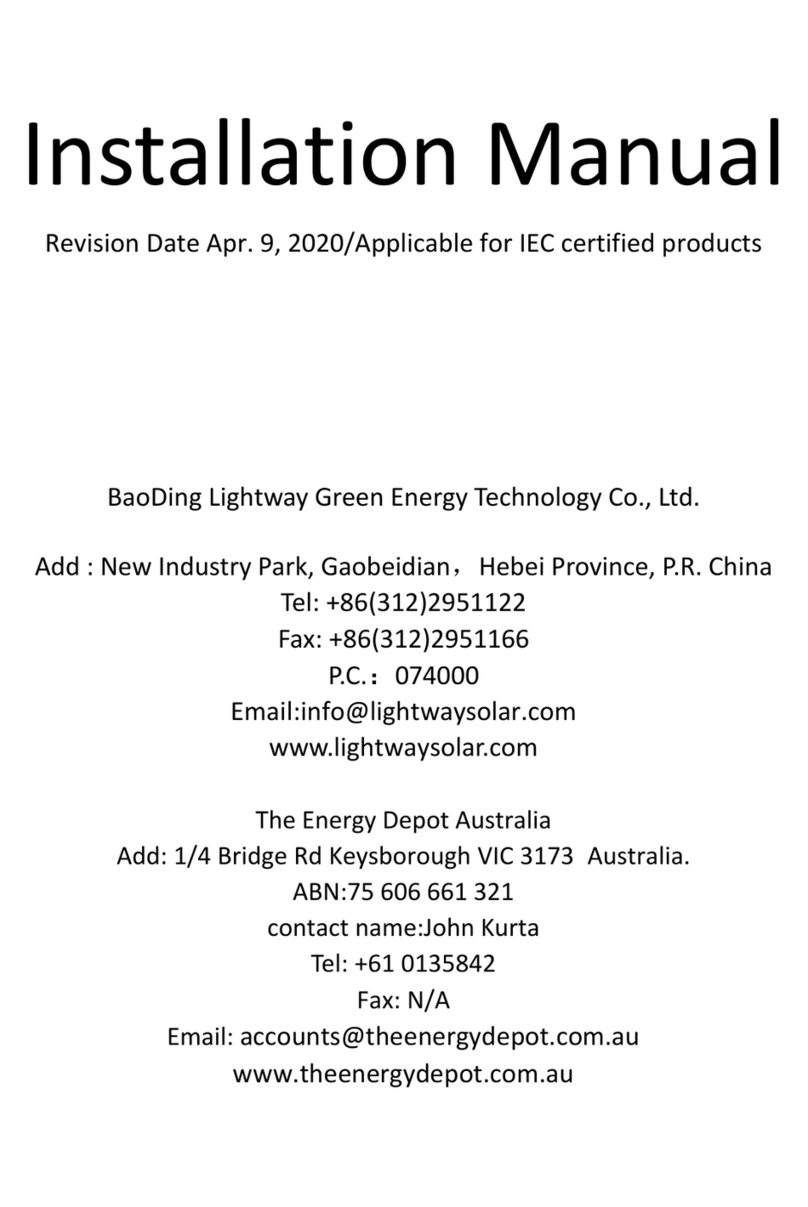
Lightway
Lightway LW6P72-340 installation manual
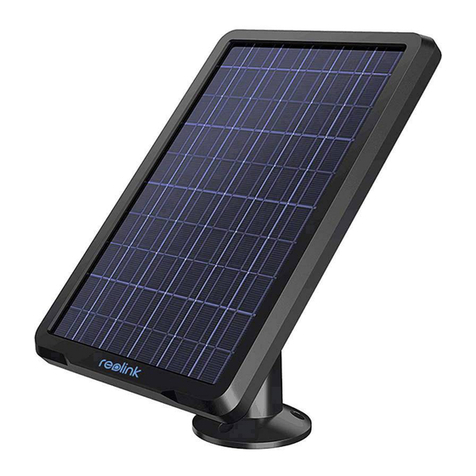
Reolink
Reolink RLSOLP Operational Instruction
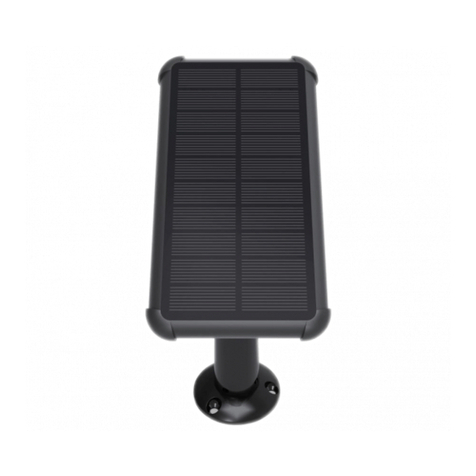
Ezviz
Ezviz CS-CMT-Solar Panel quick start guide
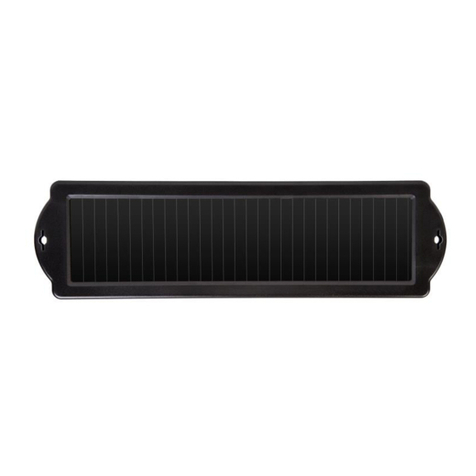
Sunforce
Sunforce Solar 12 Volt Battery Maintainer user manual

SOMFY
SOMFY 3.2W Solar Panel instructions
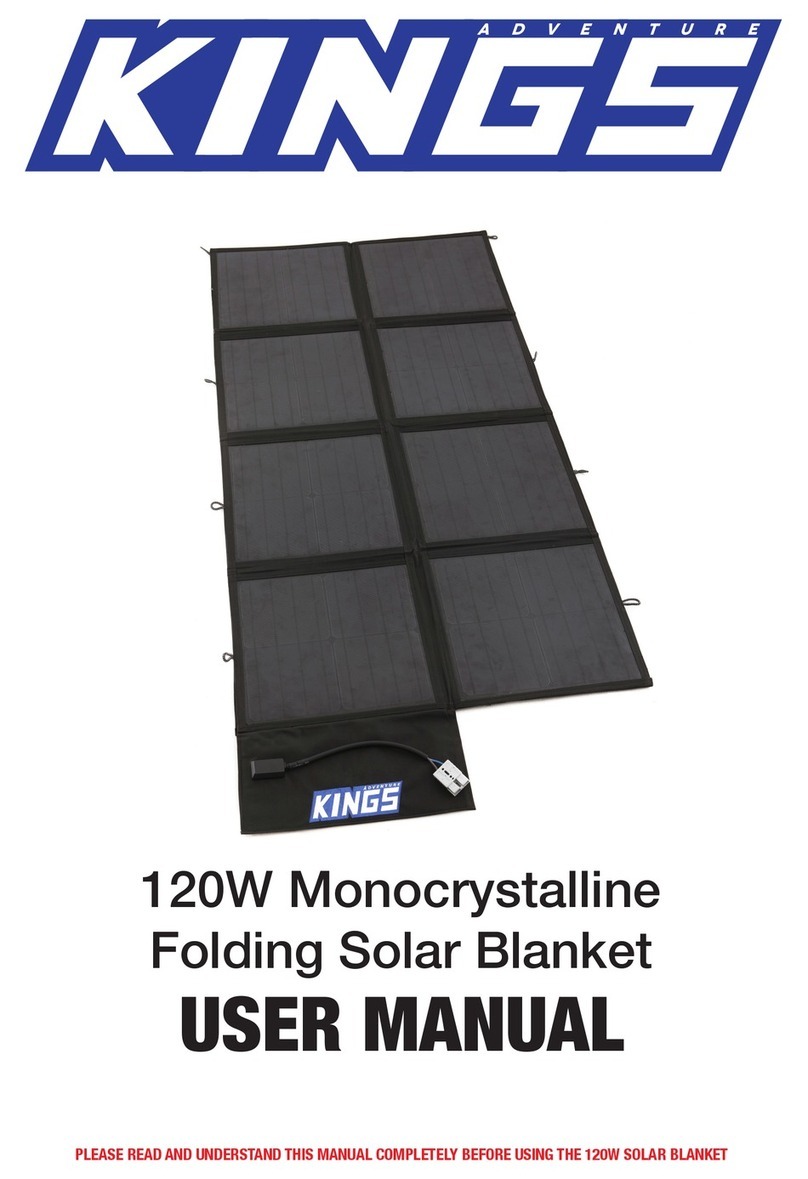
Adventure Kings
Adventure Kings 120W Folding Solar Blanket user manual

PV-ezRack
PV-ezRack DFendr installation guide

Navitron
Navitron HFC-2 installation instructions

AZO Digital
AZO Digital MPPT-3000 operating manual
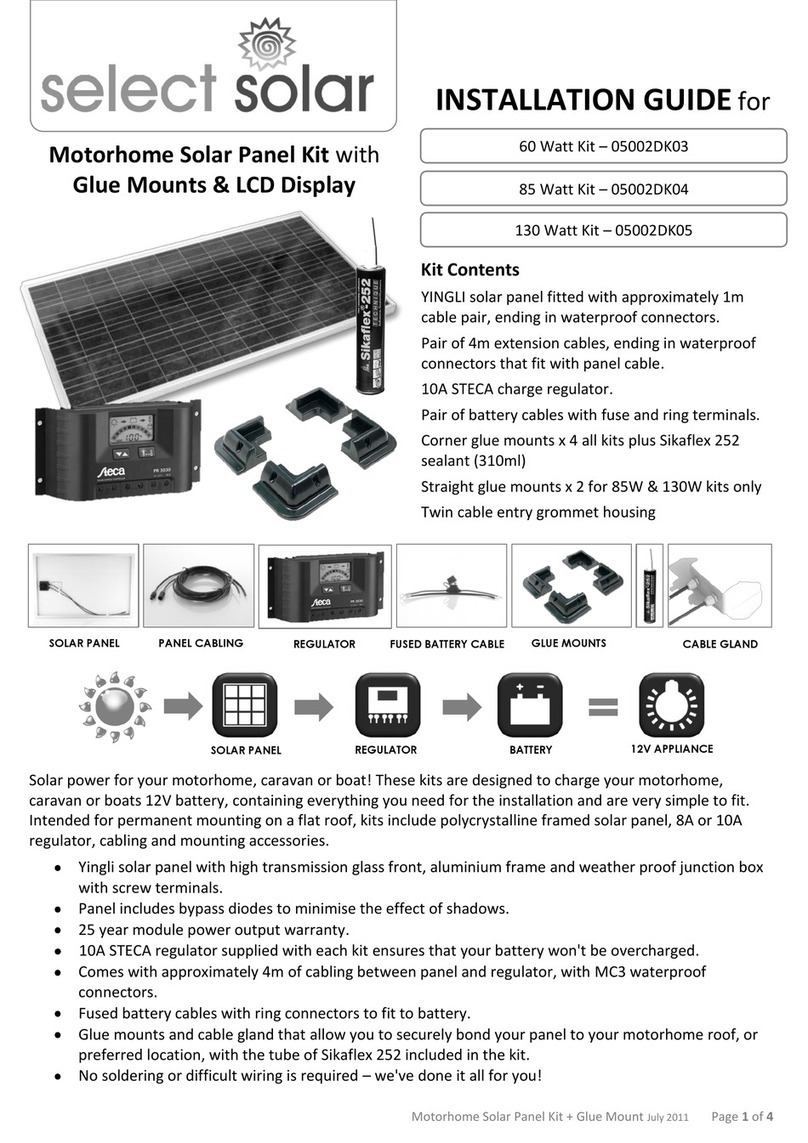
select solar
select solar 05002DK03 installation guide
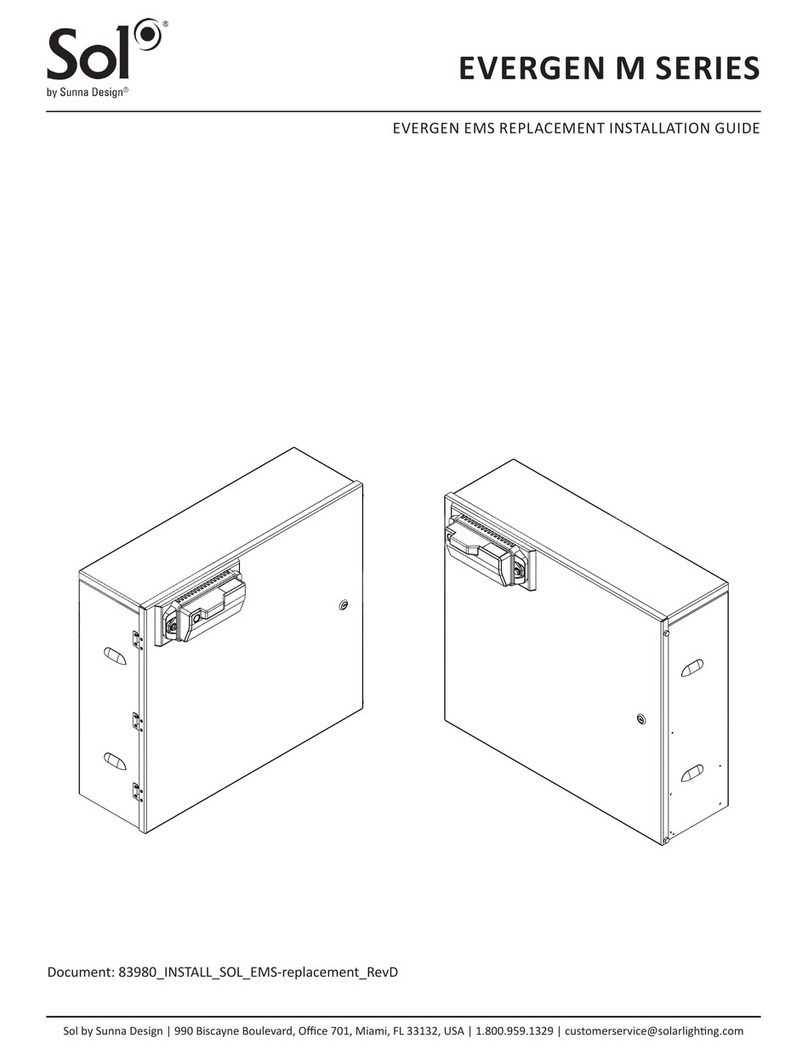
Sunna Design
Sunna Design Sol EVERGEN M Series installation guide
